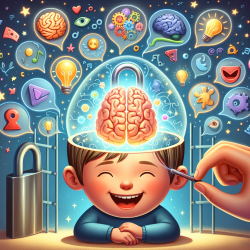Online therapy for children with Autism Spectrum Disorder (ASD) and Klinefelter Syndrome (KS) is a burgeoning field, and understanding how these children process figurative language can significantly enhance therapeutic approaches. A recent study titled "Reasoning on Figurative Language: A Preliminary Study on Children with Autism Spectrum Disorder and Klinefelter Syndrome" provides valuable insights into how these populations comprehend metaphors and idioms. Here, we explore how practitioners can implement these findings to improve their online therapy sessions.
Key Findings of the Study
The study compared three groups of children aged 9-12: those with ASD, those with KS, and typically developing (TD) children. The children were assessed on their ability to comprehend idioms and metaphors through various tasks. The key findings were:
- Idiom comprehension had a very small weight in distinguishing children with ASD from TD controls.
- Metaphor explanation significantly distinguished children with ASD from TD controls.
- Children with KS showed linguistic profiles similar to those with ASD, particularly in metaphor explanation tasks.
Implications for Online Therapy
Understanding these findings can help practitioners tailor their online therapy sessions to better meet the needs of children with ASD and KS. Here are some practical steps:
Focus on Metaphor Explanation
The study highlights that children with ASD and KS struggle more with explaining metaphors than understanding idioms. Practitioners should:
- Incorporate more activities that require children to explain metaphors in their own words.
- Use visual aids and concrete examples to help children understand abstract concepts.
- Gradually increase the complexity of metaphors used in therapy sessions.
Leverage Multiple-Choice Tasks for Idioms
Since idiom comprehension was not a significant differentiator, multiple-choice tasks can still be effective. Practitioners should:
- Use multiple-choice questions to assess idiom comprehension as a starting point.
- Gradually introduce more open-ended questions to encourage deeper understanding.
Incorporate Theory of Mind (ToM) Activities
Previous research has shown a correlation between ToM and metaphor comprehension. Practitioners can:
- Integrate ToM activities that require children to infer the mental states of others.
- Use social stories and role-playing exercises to enhance ToM skills.
Encouraging Further Research
While this study provides valuable insights, it also highlights the need for further research, especially with larger sample sizes and diverse populations. Practitioners are encouraged to:
- Stay updated with the latest research in figurative language comprehension in ASD and KS.
- Collaborate with researchers to develop new assessment tools and therapeutic approaches.
To read the original research paper, please follow this link:
Reasoning on Figurative Language: A Preliminary Study on Children with Autism Spectrum Disorder and Klinefelter Syndrome.










